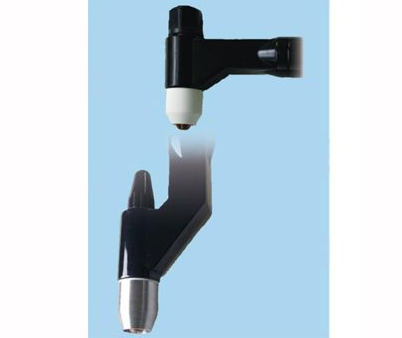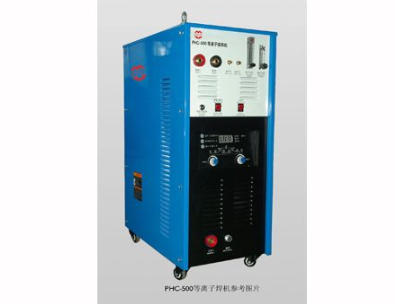Plasma welding is an advanced welding process that utilizes an electric arc and ionized gas to create a high-temperature plasma jet for welding metals. It offers several advantages over traditional welding methods, including increased precision, higher welding speeds, and improved weld quality. Here's an overview of the plasma welding process:
Plasma Arc Formation: Plasma welding uses a non-consumable tungsten electrode to create an electric arc. A shielding gas, typically argon or a mixture of argon and hydrogen, is directed through the electrode to create a plasma gas. The plasma gas is ionized, forming a high-energy plasma arc that reaches temperatures of up to 30,000 degrees Celsius (54,000 degrees Fahrenheit).
Plasma Torch: A plasma torch is used to generate and control the plasma arc. It consists of a torch body, electrode, nozzle, and shielding gas supply. The torch focuses and directs the plasma arc onto the welding area.

Plasma Arc Welding Torch
Welding Process: Plasma welding can be performed in two primary modes: transferred arc and non-transferred arc.
Transferred Arc Mode: In this mode, the plasma arc is transferred from the electrode to the workpiece. The electrode tip makes contact with the workpiece, and the arc is established. This mode is suitable for thicker materials and provides good penetration.
Non-transferred Arc Mode: In this mode, the plasma arc remains within the torch and is not transferred to the workpiece. The arc is constricted and focused through a nozzle, creating a narrow and intense heat source. This mode is ideal for precision welding applications, such as thin materials or intricate welds.

Plasma Arc Welding Machine
Welding Advantages: Plasma welding offers several advantages compared to other welding processes:
Versatility: Plasma welding can be used for a wide range of materials, including stainless steel, aluminum, titanium, and other metals and alloys.
Applications: Plasma welding is commonly used in various industries, including aerospace, automotive, manufacturing, and precision engineering. It is particularly suitable for applications requiring high-quality welds, such as in the fabrication of aircraft components, medical devices, and high-precision machinery.
It's worth noting that plasma welding requires specialized equipment and skilled operators. Proper setup, torch positioning, and parameter adjustment are crucial to achieving optimal results.







